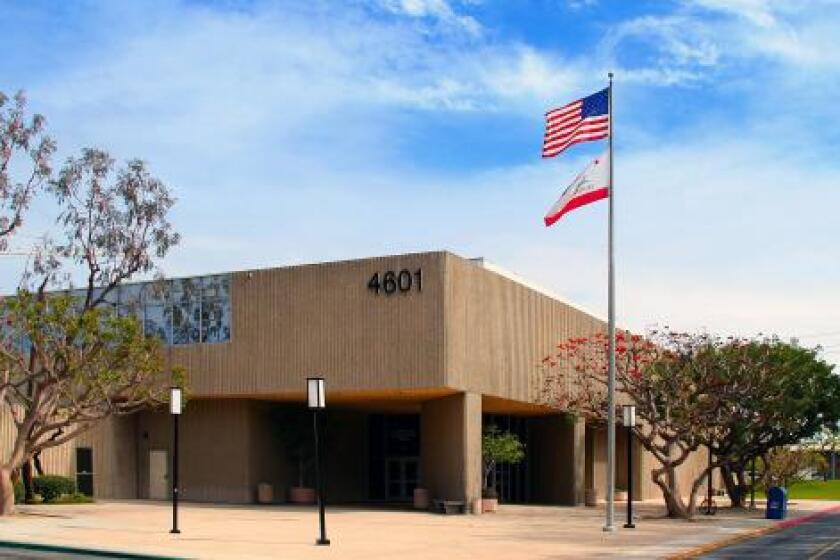IN THE CLASSROOM -- Going behind the numbers
- Share via
Deirdre Newman
In most math classes, you might learn that pi is the equivalent of
3.14 and is used to determine the area and circumference of circles.
But in professor Eduardo Arismendi-Pardi’s ethnomathematic class at
Orange Coast College, you would discover that the mathematical equation
for pi was derived differently by the Arabs, Indians and Egyptians.
“They represent different versions of the human endeavor,”
Arismendi-Pardi said.
The human endeavor is at the heart of ethnomathematics -- the study of
math from different cultures, or “math without borders,” as student
Russell Miller characterizes it.
The class is unusual because it delves into issues that don’t often
surface in traditional math classes, such as the role of women in the
development of mathematics and how mathematics pertains to democracy and
civil rights.
Arismendi-Pardi is teaching the course for the first time, and his
lecture notes are based on a rough draft for a book he is working on.
One of the first topics of discussion was how various cultures used
math to serve their needs, based on their environment. For instance,
Navajo Indians used a form of geometry in designing their intricate rugs.
The Mayans built temples based on the shape of ears of corns.
Last week, the topic was how mathematics relates to democracy, civil
rights and social issues. The link is “quantitative literacy” -- an
approach to solving problems and judging decisions that uses mathematics
and statistics, Arismendi-Pardi said. A grasp of quantitative literacy
enables people to make informed decisions based on information presented
in formats such as charts, graphs and polls, he explained.
Arismendi-Pardi contends that traditional math curriculum has failed
students, especially ethnic minorities and women, because they may not
have the number skills or the confidence required to successfully
participate in a democratic society.
“What is needed for life is quantitative literacy, and what is needed
for education is mathematics,” he said.
So he suggested 10 skills that students need to enhance their
quantitative literacy, including logical thinking, the ability to use
math in daily life and the confidence to use common sense and estimation
in using numbers to measure things.
This information was vital to student Stacey Boynton, who said she has
struggled with math in the past.
“All these 10 things have given me confidence and a basic theoretical
understanding,” Boynton said. “I need the whole context before I can
learn the little pieces.”
Discussion of the various topics usually inspires lively debates as
students share their own perceptions and attitudes about math.
Sabrina Carmona, 22, said learning about ethnomathematics has made her
a more critical thinker.
“I never questioned the history of math [before], I just took it at
face value,” she said.
Arismendi-Pardi said he was impressed with the high level of cognitive
skills displayed by the students, who in addition to enhancing their
mathematical thinking are also providing feedback for his book.
“I really love the class, and I think the students are so mature,” he
said.
* IN THE CLASSROOM is a weekly feature in which Daily Pilot education
writer Deirdre Newman visits a campus and writes about her experience.
All the latest on Orange County from Orange County.
Get our free TimesOC newsletter.
You may occasionally receive promotional content from the Daily Pilot.



